
Strahovsky Monastery (Strahovský klášter) is an ancient monastery in Prague, which belongs to the oldest monasteries of the order of premonstrant monks.
The Strahov Monastery is a complex containing: the Strahov Library with Baroque Theological and classical Philosophical Halls, the Strahov Art Gallery with Baroque and Rococo paintings, the Basilica of the Ascension of the Virgin Mary, the Church of St. Roch and the Strahov monastery brewery.
All the objects of the monastery can be visited.
Strahov Monastery is located in the historical district of Prague - Strahov (Strahov), on the west bank of the Vltava River and near the hill of Petrshin, Malaya Strana and Hradcany.
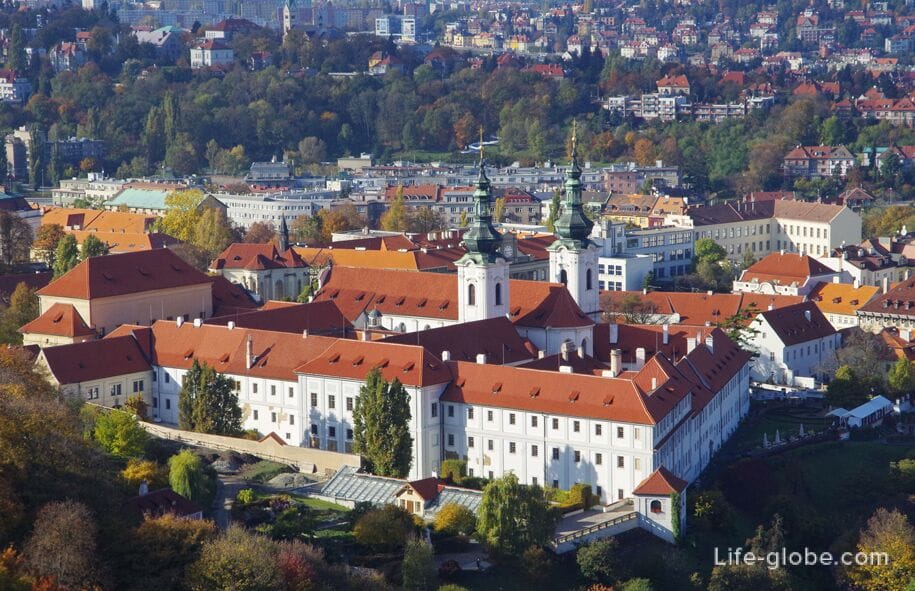
On the slope, near the monastery, theStrahovsky garden with vineyards (Strahovská zahrada), which was founded in the early Middle Ages as a subsidiary farm.
From the platform above the garden, which is near the monastery, there are wonderful panoramic views of the garden and Prague.

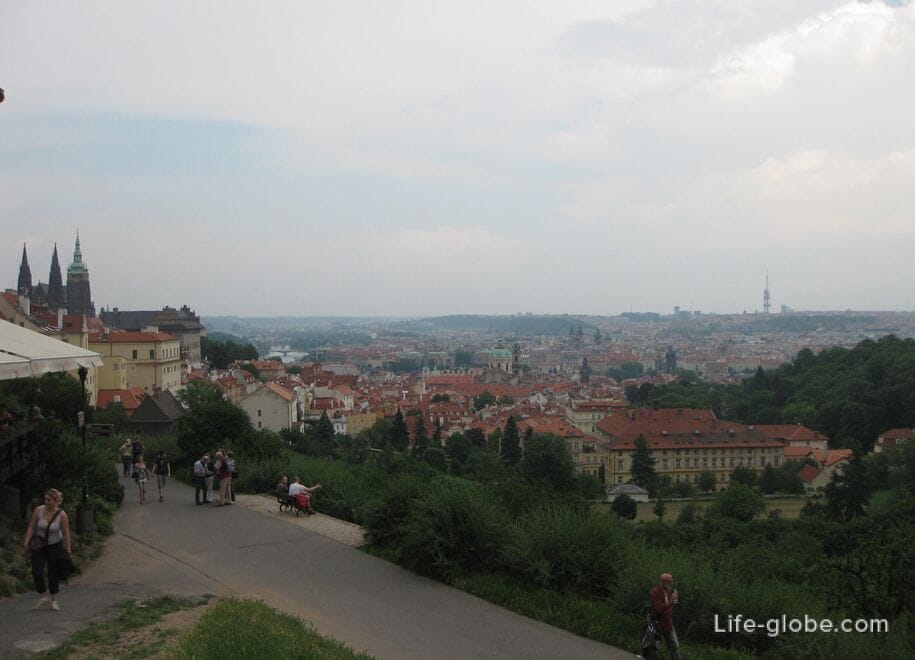
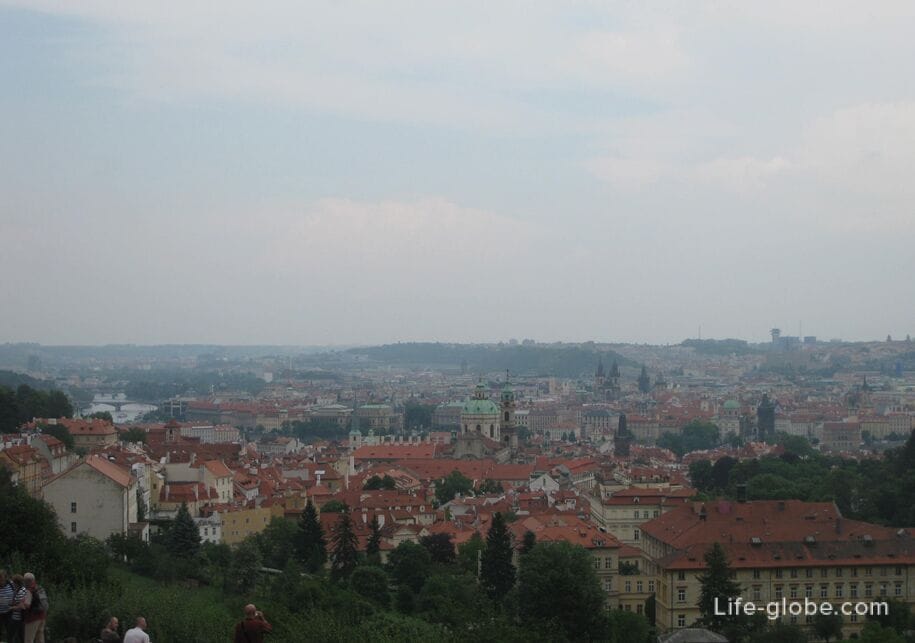
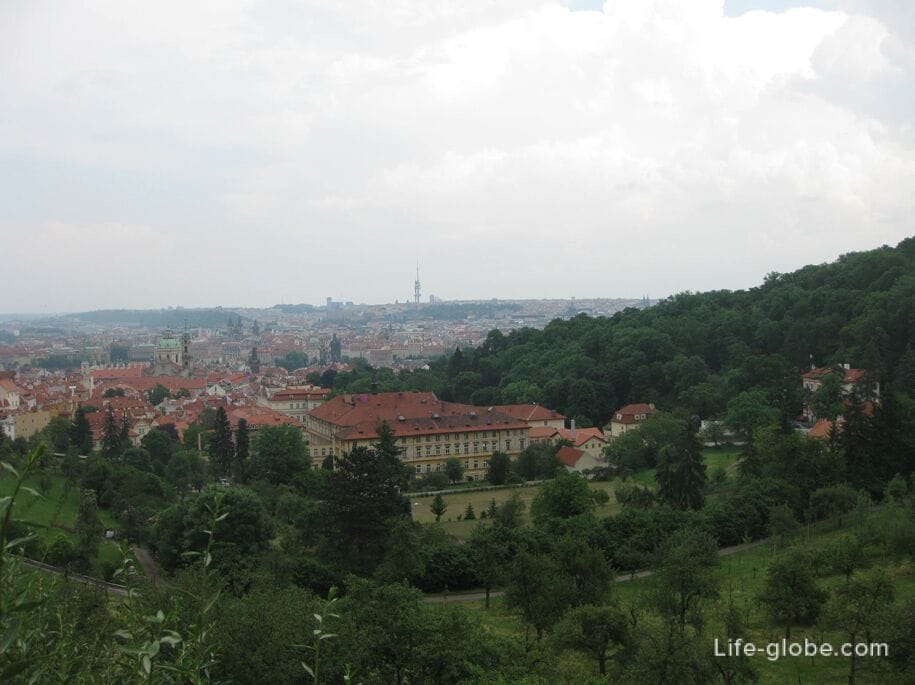
The name of the monastery "Strahovsky" comes from the word "guard" (in Czech stráž), because in this place there was an outpost guarding the approaches to Prague Castle.
The monastery of the Premonstratensian Order in Strahov was the first Premonstratensian monastery in the Czech Republic. The monastery was founded in 1140-1143 by the Czech King Vladislav II on the initiative of his wife Gertrude and Bishop of Olomouc Jindřich Zdik.
Shortly after its foundation, the monastery was transferred to the monastic order of premonstrants.
After its construction, the area of the monastery was probably larger than the then Prague Castle, and it was the largest Romanesque building in the Czech Republic and, possibly, in the whole of Europe.
Monks, important people lived in the monastery and state meetings were held there.
During the history of the monastery was rebuilt and expanded, thereby the monastery complex changed its appearance - it had first Romanesque, and then early Gothic styles.
In the 17th and 18th centuries, the monastery acquired its predominantly Baroque appearance, which has been preserved to the present day. The incarnation of the Baroque monastery was carried out by the Italian architect Anselmo Lurago.
The monastery has a courtyard, a building in which monastic life mainly took place. To the east is the abbey building.
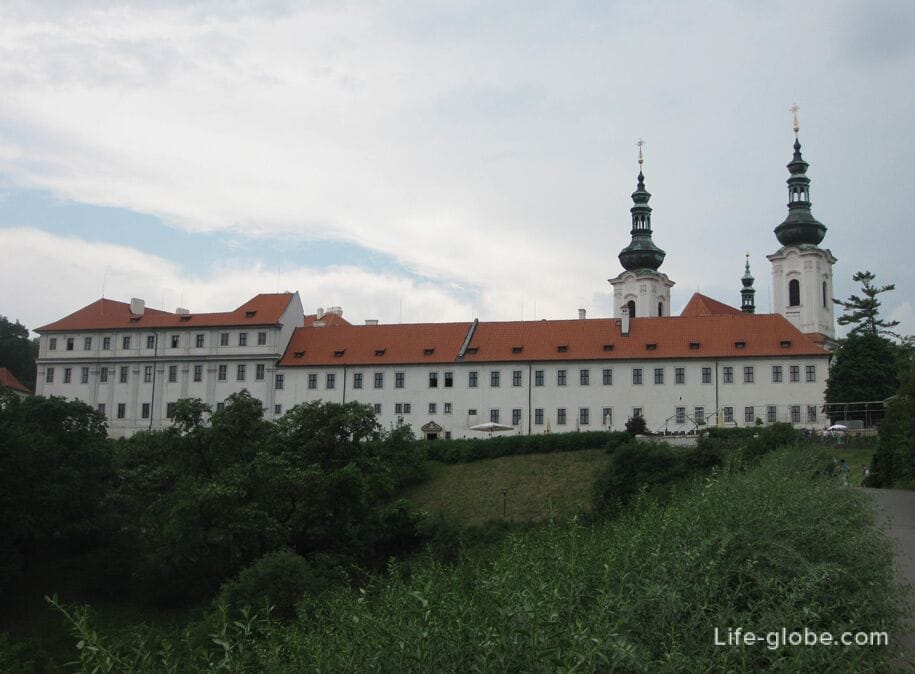

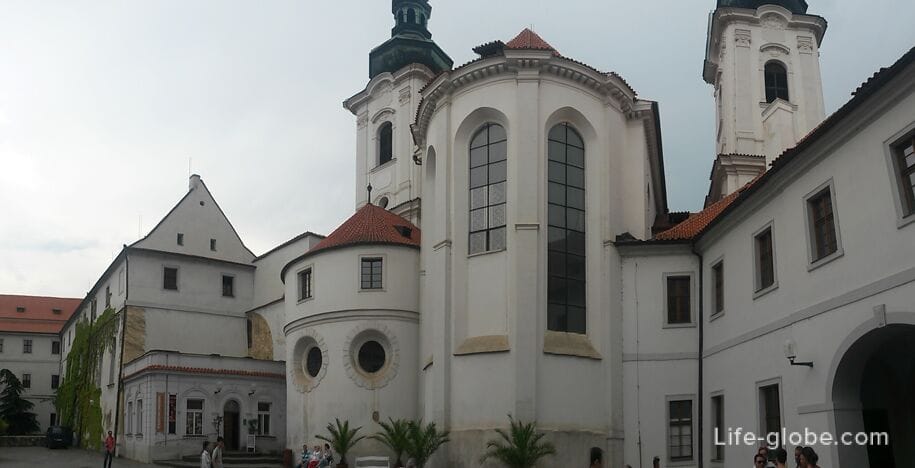
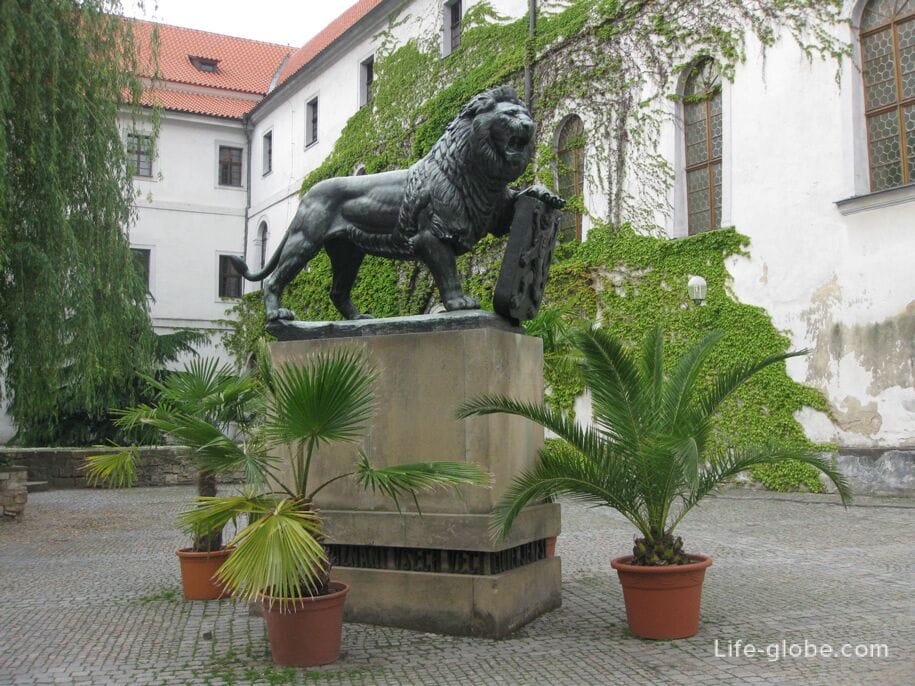
The Basilica of the Ascension of the Virgin Mary or the Basilica of the Assumption of the Blessed Virgin Mary in Strahov (Bazilika Nanebevzetí Panny Marie na Strahově) is an abbey church in the center of the monastery, which is a Romanesque basilica with a Gothic transept and two Renaissance and Baroque towers.
The church acquired its present Baroque appearance in 1742-1758, when it was rebuilt on the foundation of the original Romanesque church. The reconstruction took place under the direction of A. Lurago.
In 1174, its founder Vladislav II was buried in the church, and before that his wife Gertrude, as well as Bishop Jindřich Zdik. However, their graves were not discovered during archaeological research.
In 1992, the church was erected by Pope John Paul II to a Minor Basilica.


The basilica has a main and side altars.
In the middle of the nave is the Chapel of Our Lady of Passau, built by Albrecht Wallenstein for the Imperial General Pappenheim and his nephew Berthold, who fell in the Battle of Lutzen. On the altar there is a copy of the image of the Virgin Mary from Passau, and on the ceiling there is a fresco by Siard Nosecki depicting the Battle of Lutzen. General Gottfried of Pappenheim, who died after the Battle of Lutzen in 1632, is buried in this chapel.
On the opposite side of the church is the chapel of St. Vorshila, which houses the altars of St. Vorshily and St. Norbert, the founder of the Premonstratensian Order and patron of the province, whose remains were transferred to Strahov from the Magdeburg Premonstratensian Monastery in 1627 and buried in this chapel.
The predominantly baroque interior of the basilica is decorated with eight large and thirty-two smaller frescoes on the vault and twelve wall paintings from the life of St. Norbert in the side nave above the arcades.
There is an organ in the walls of the basilica, and services are held.
Guided tours of the interior of the basilica are available upon prior request. During the daytime, the basilica is usually closed outside of mass.
The Basilica's website: farnoststrahov.cz .
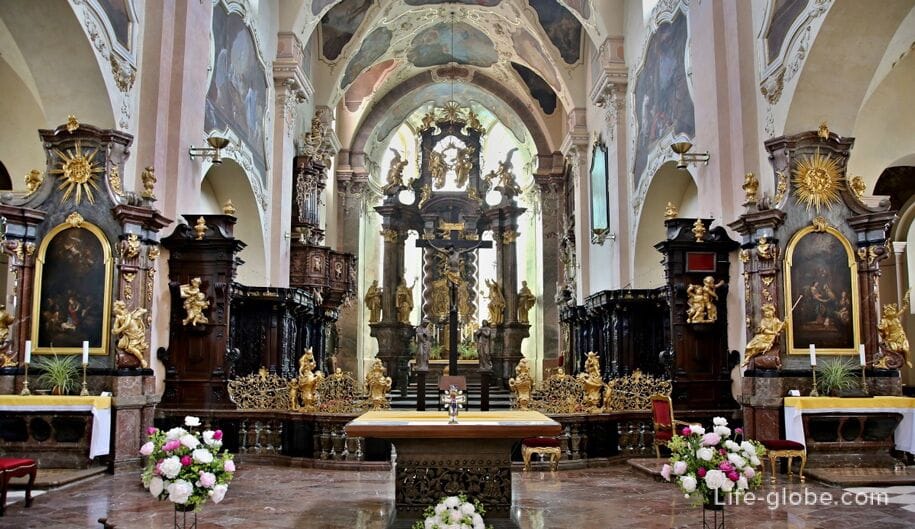
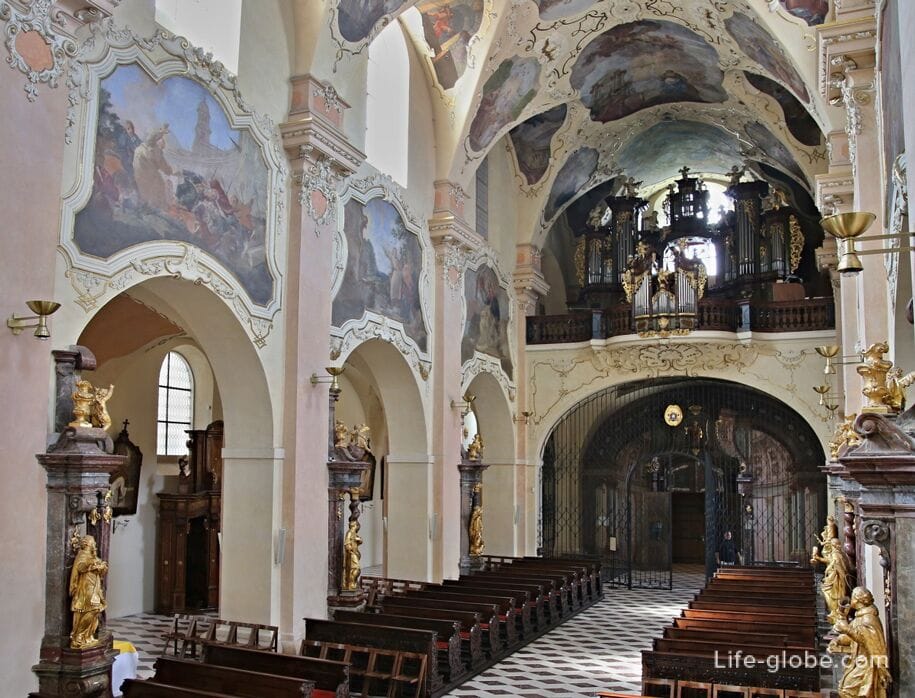
Strahovskaya Library (Strahovská knihovna) is the library of the monastery, which is one of the most valuable and best preserved historical libraries.
The library's collection includes 200,000 volumes, including the Strahov Gospel of the 9th-10th centuries.

The oldest part of today's library isThe Theological Hall or Theological Hall (Teologický sál) in the Baroque style, built in 1671-1679 by architect Giovanni Dominic Orsi.
There are 18,000 theological books in the library hall, and wooden carved cartouches with drawings and inscriptions above the shelves indicate the type of literature in the department.
The ceiling frescoes of the hall by Siard Nosetsky of the 18th century illustrate the attitude of people to the book, and the Latin inscriptions are quotations from the Bible.
Interesting exhibits of the Theological Hall include the so-called compilation tour, a writing desk for composing texts.
On both sides of the hall there are terrestrial and astronomical globes.

The second hall of the library is the Philosophical Hall (Filosofický sál), made in the classical style and is the main one.
The vaulted Philosophical Hall dates from 1794-1797, and its height exceeds two floors of the building.
In 1794 Anton Maulbertsch painted the ceiling of the library on the theme "The Path of mankind to wisdom" based on a painting from the library of Luke.
In the Philosophical Hall there is a Kunstkamera with natural science collections: various animals, minerals, fruit models. There are medical, legal or alchemical books in the connecting corridor. At the end of the corridor, an arboretum library, the so-called xyloteca, attracts attention, where the book covers are made of the wood of the corresponding tree. There is also a torch of the 9th century Strahov Evangelist with an unusual luminous decor; a model of a warship, cannonballs, military boots, etc.
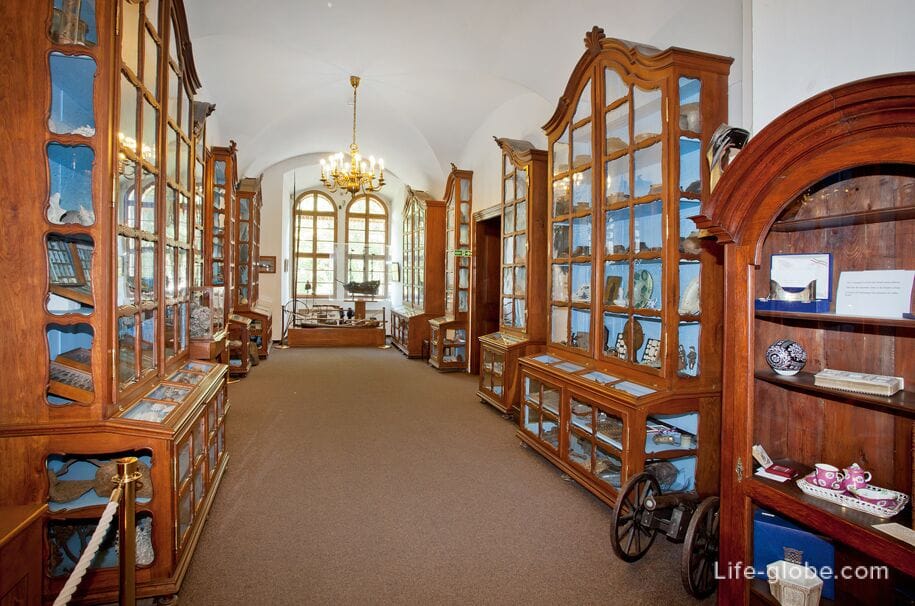
Visiting two halls of the Strahov Library is available on tickets for a fee.
The Strahovskaya Art Gallery (Strahovská obrazárna) has existed since the 18th century and contains one of the most important collections of Gothic painting, Rudolphin art, as well as Baroque and Rococo paintings in Central Europe.
Currently, the gallery's collection includes thousands of paintings, a number of sculptures and handmade products. The permanent exhibition presents a selection of works of art from the 14th to the 19th centuries.
In addition to the permanent, short-term exhibitions are held in the Krzhizhov Corridor and monastery galleries.
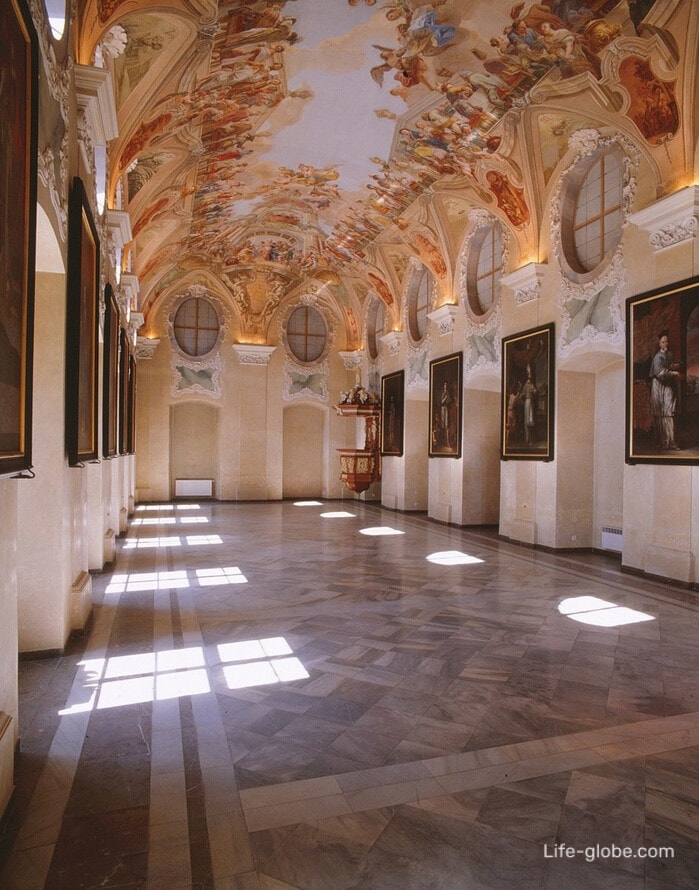
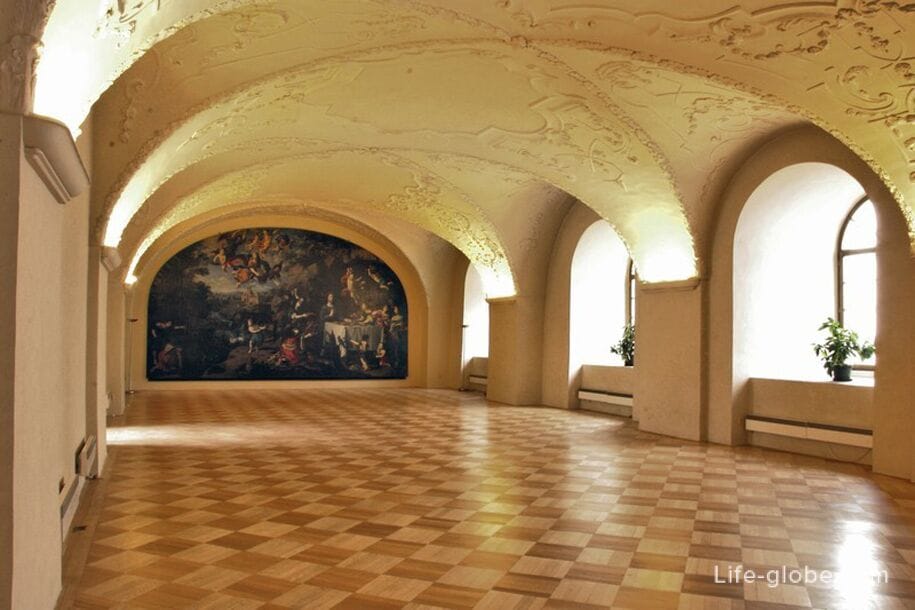
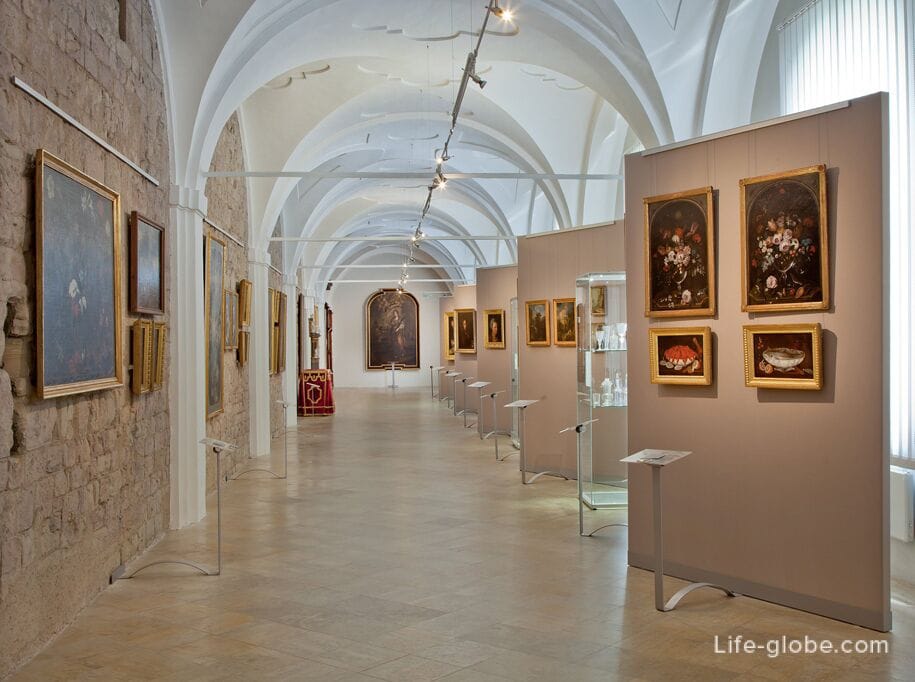
Visiting the art gallery is possible for a fee.
There is a comprehensive ticket to visit the halls of the library + the art gallery of the Strahovsky Monastery.
The Renaissance Church of St. Roch with Gothic elements (kostel sv. Rocha).
The church was built in the early 17th century by Emperor Rudolf II in gratitude for preventing the plague epidemic.
Originally it was the parish church of the Strahov Monastery. During the reign of Joseph II, it was abolished in 1784, and the Church of the Assumption of the Blessed Virgin Mary was declared a parish monastery church. For some time the church served as a chapel for the dead, and later was used as a blacksmith shop. In 1881, the abbot of Strahov, Sigismund the Old, carried out a large-scale reconstruction of the church, and on October 15, 1882, it was again consecrated.
Under the communist regime, the church was "nationalized" (like the monastery) and at first served as a repository, but later was transformed into an exhibition hall.
Today, services do not take place in the church - the art gallery "Galerie MIRO" is located within its walls.
Gallery website: galeriemiro.cz .
The address of the Church of St. Roch: Strahovské nádvoří 136, 118 00 Praha 1-Hradčany, Czech Republic.
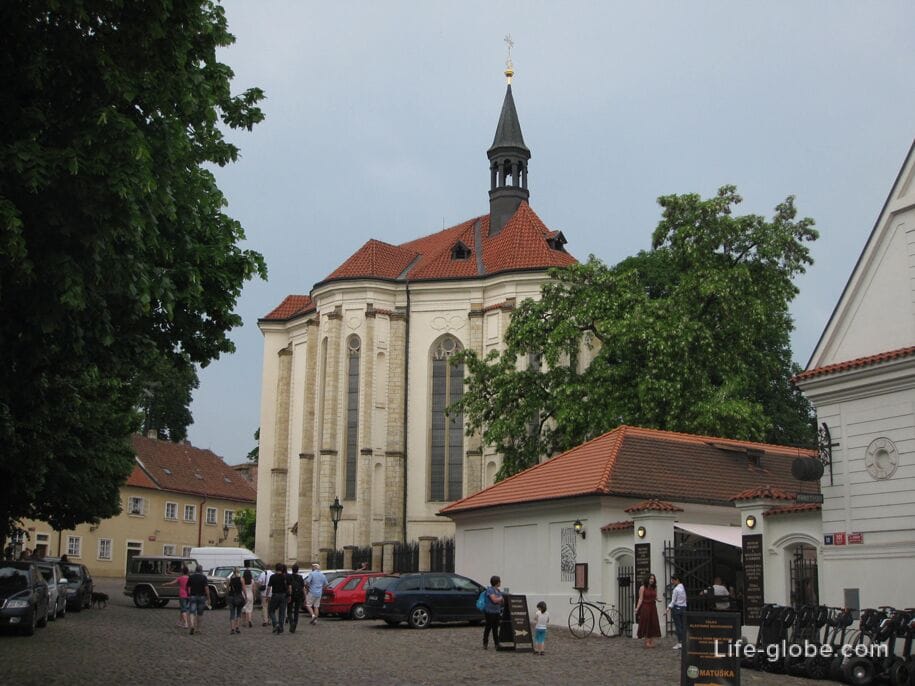
Next to the main complex of the monastery is the monastery brewery "Strahov" (Pivovar Strahov) with a restaurant and a beer garden.
The brewery in the monastery (Klášterní pivovar Strahov) has been mentioned since the 13th-14th centuries. However, it is more reliably known that the brewery in the new monastery building built at that time was built by Jan Lohelius from 1612.
Today, the brewery produces more than 25 varieties of beer, using ingredients and recipes without forgetting the heritage of local traditions. Here you can try three unfiltered, unpasteurized varieties of St. Norbert: Amber Lager, Dark Lager and IPA. Seasonal beers are also brewed, including American Pale Ale and Chocolate Stout.
The website of the brewery-restaurant: klasterni-pivovar.cz .
The address of the brewery-restaurant: Strahovské nádvoří 301, 118 00 Praha 1-Hradčany, Czech Republic.
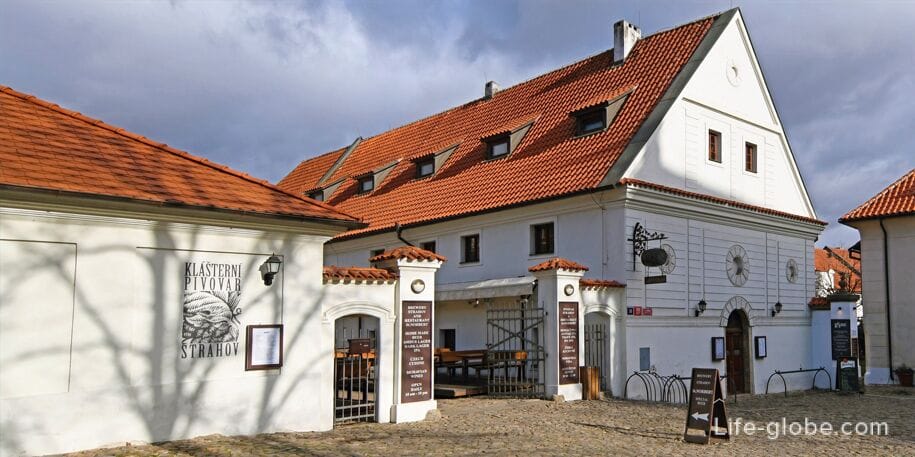
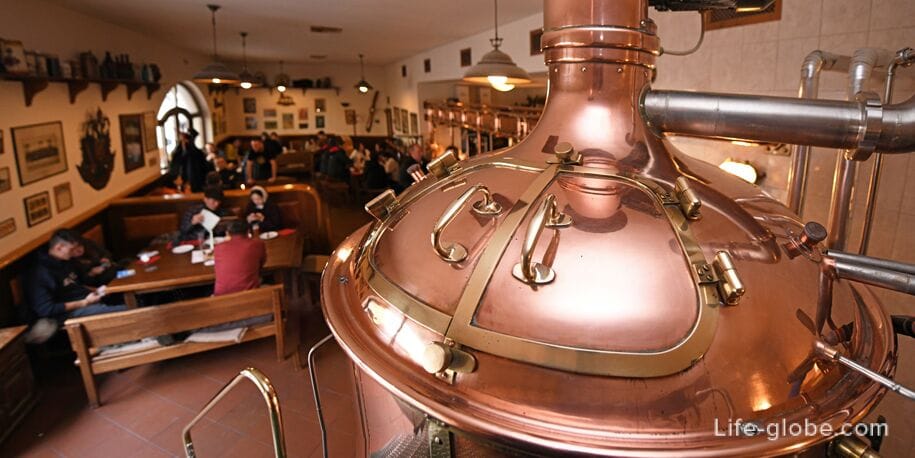
The opening hours of the monastery, the time of visiting the library and gallery, as well as temporary exhibitions and the cost of tickets are recommended to check on the official website of the Strahovsky monastery: strahovskyklaster.cz .
Strahovsky Monastery address: Strahovské nádvoří 1/132, 118 00 Praha 1.
Coordinates of the Strahovsky Monastery: 50°05'10.0"N 14°23'24.0"E (50.086111, 14.390000).
All accommodation facilities in Prague (hotels, apartments, guest houses, etc.), including in the historical center of the city and more remotely from it, can be viewed and booked here